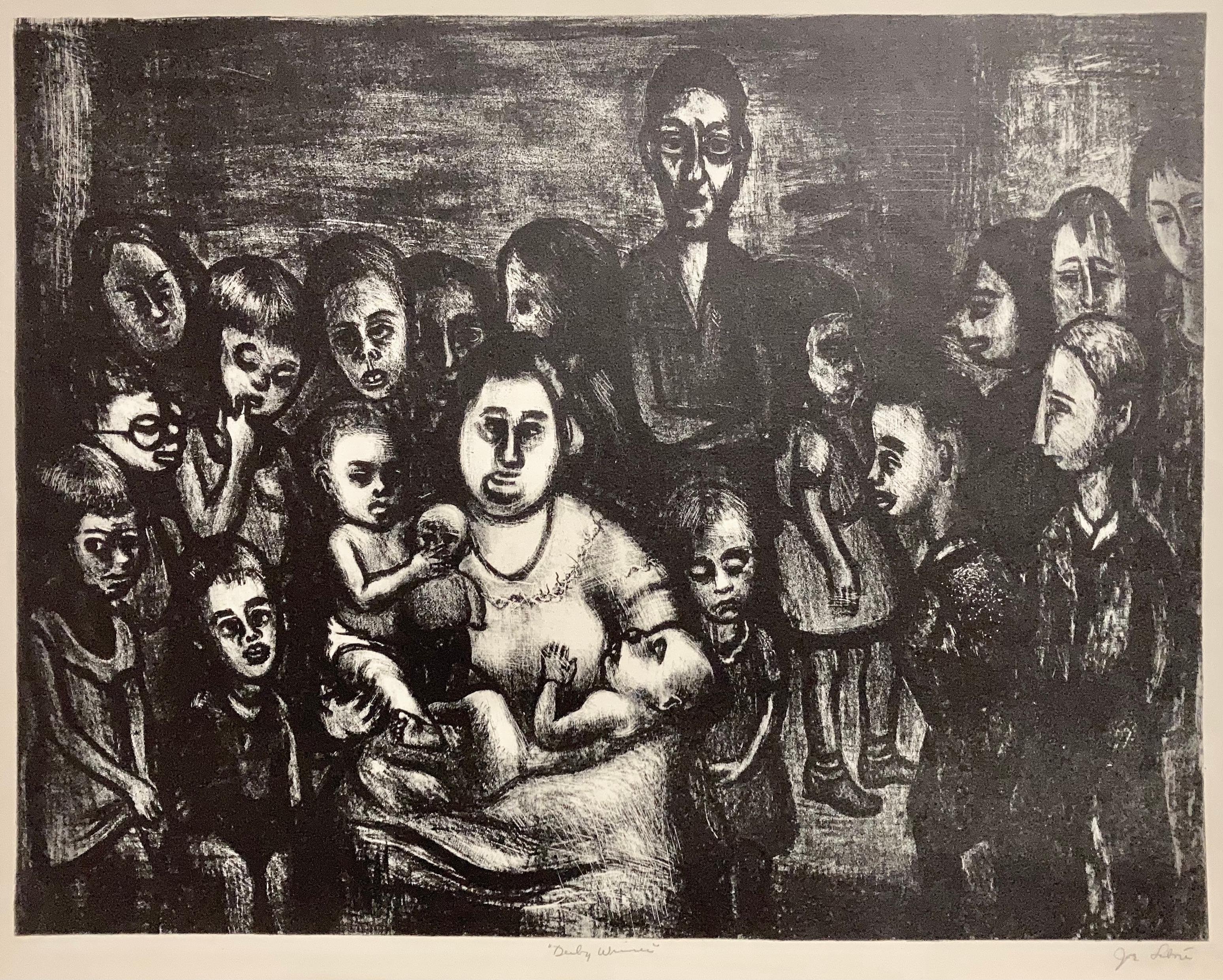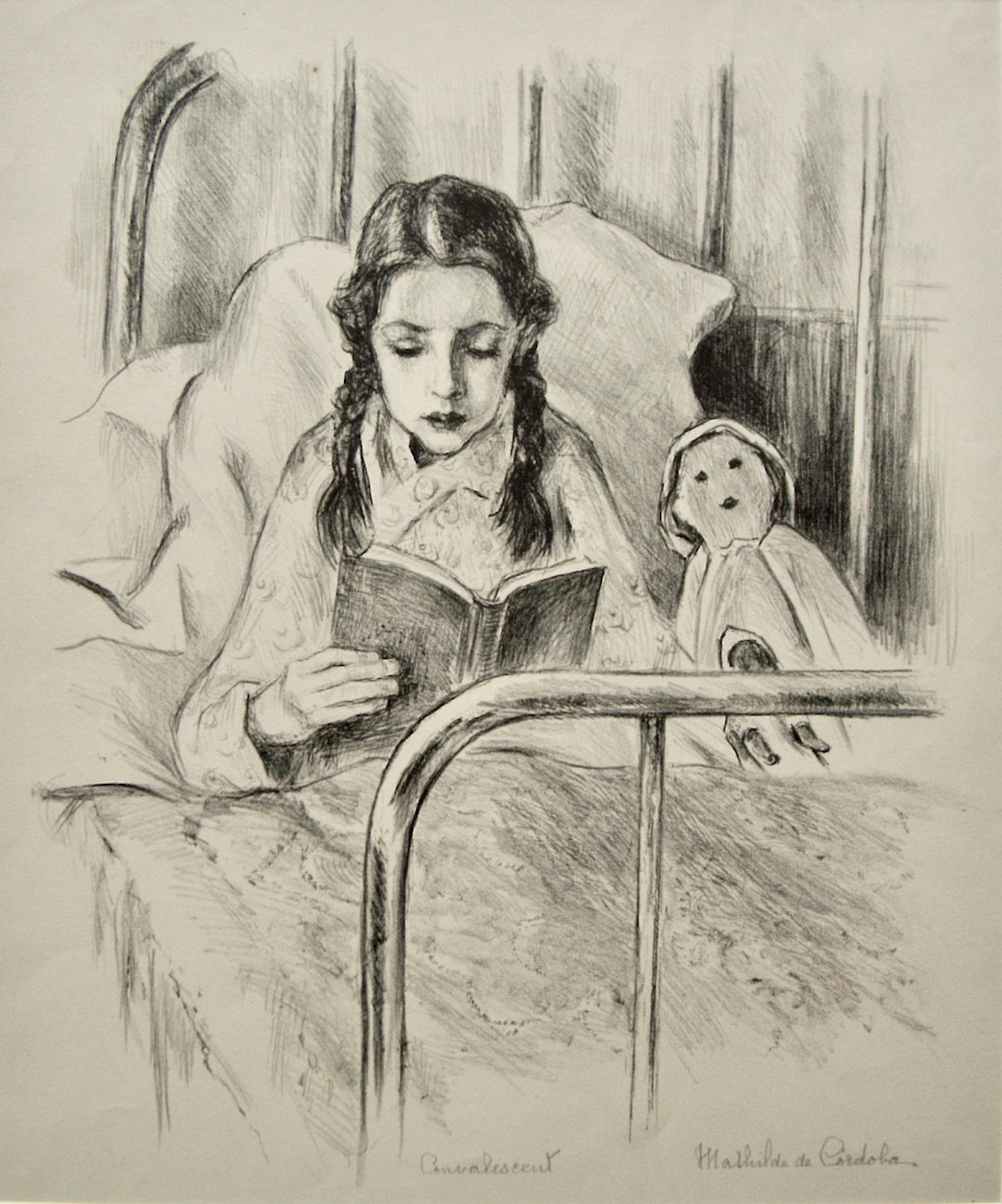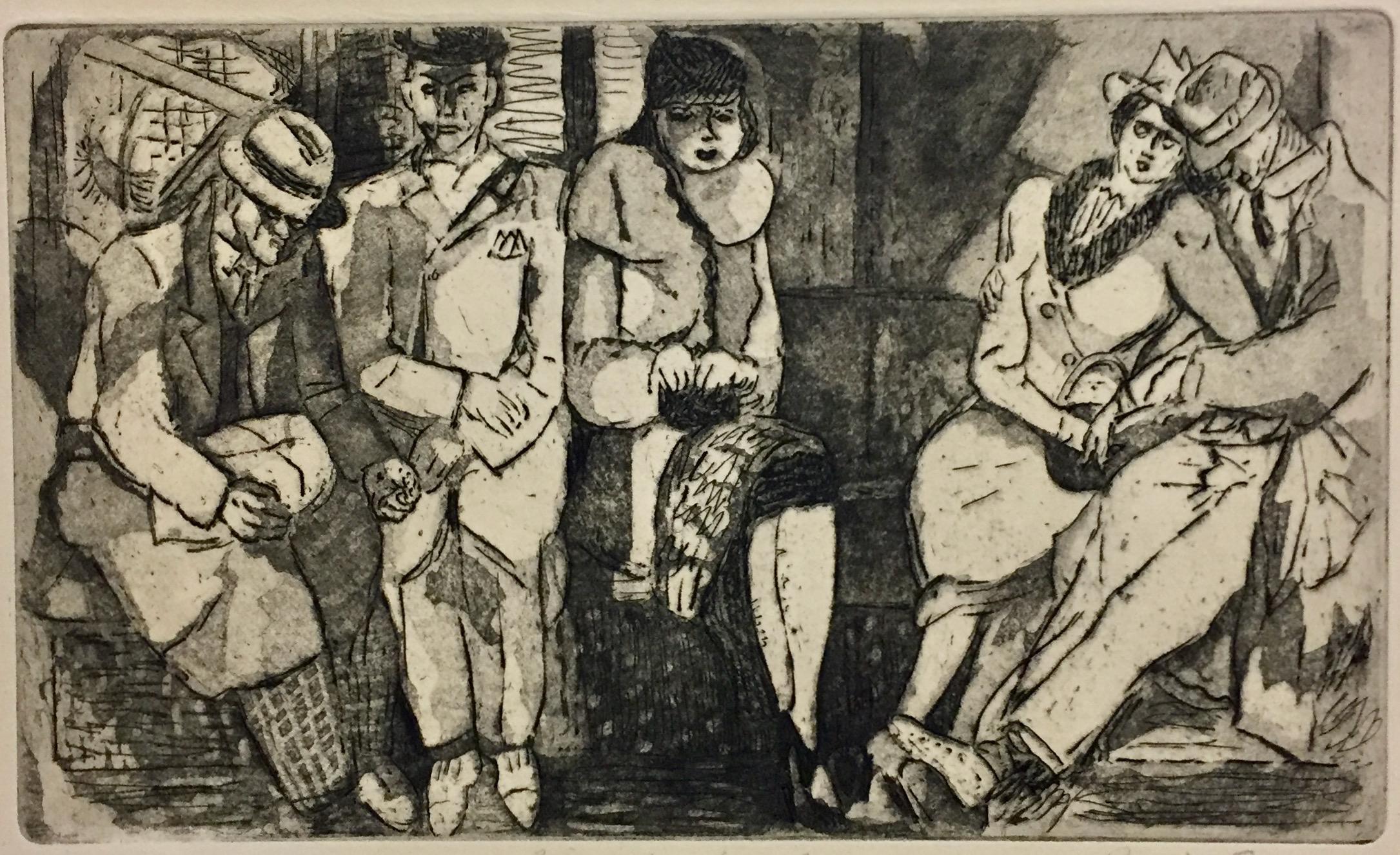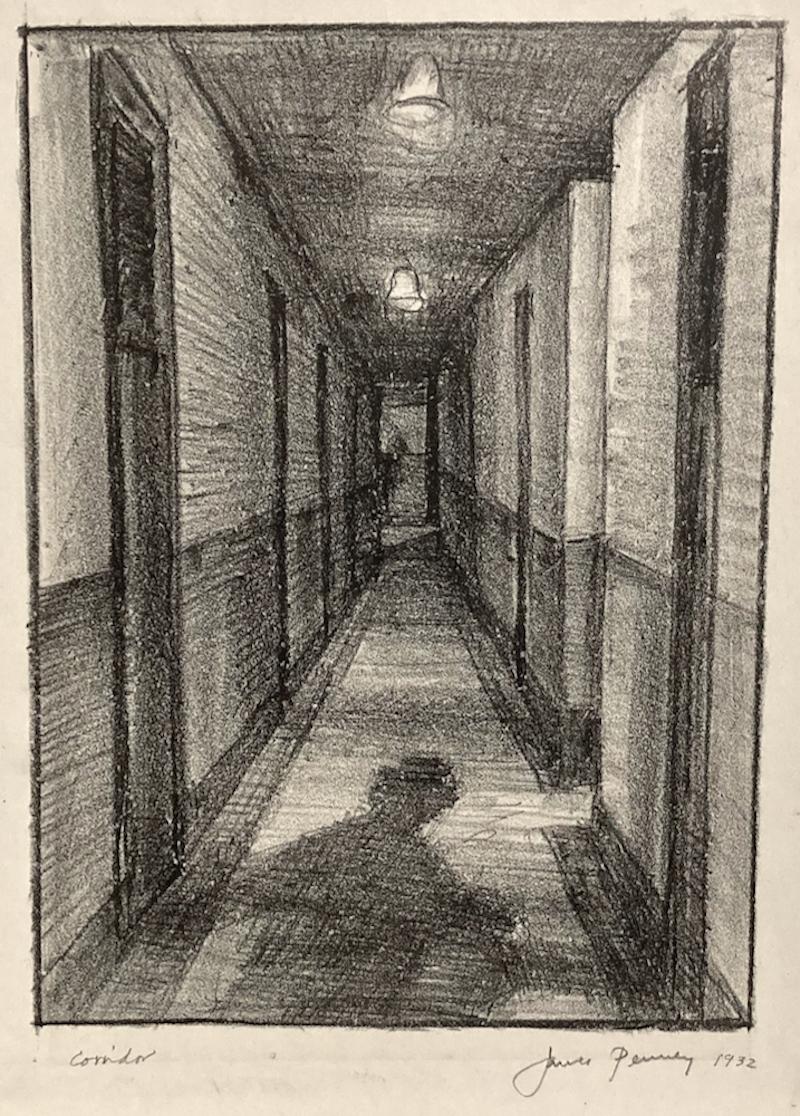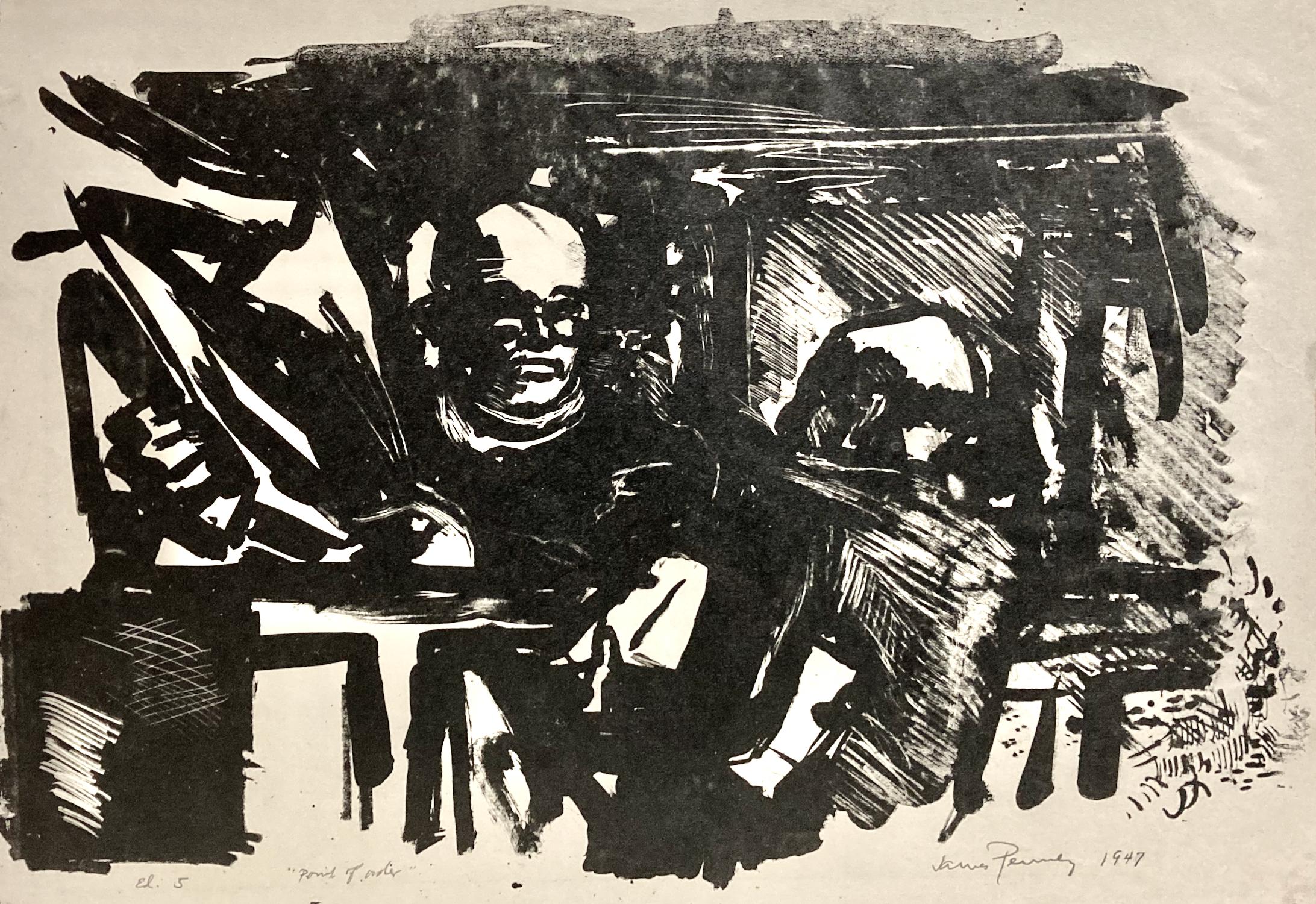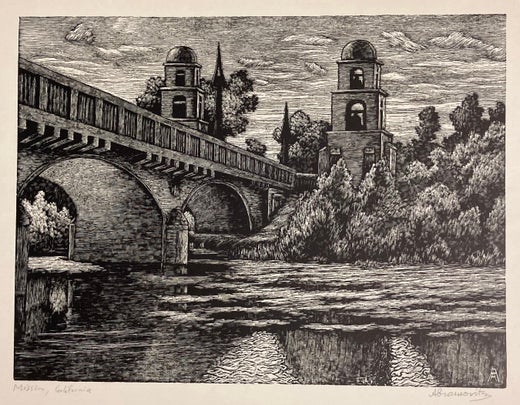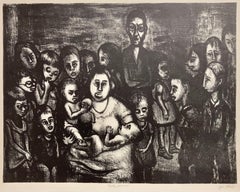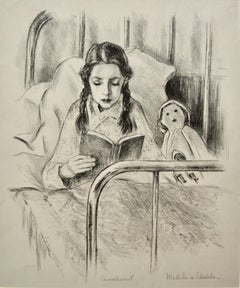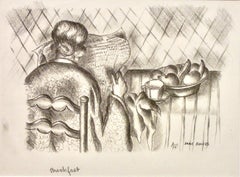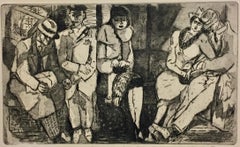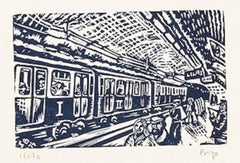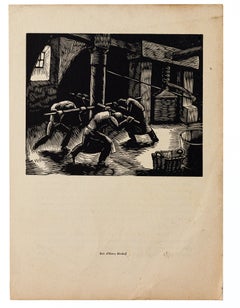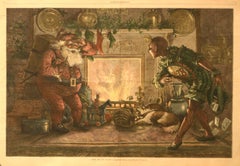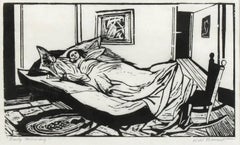Items Similar to Albert Abramovitz, The Wagonette (Moscow Subway)
Want more images or videos?
Request additional images or videos from the seller
1 of 5
Albert AbramovitzAlbert Abramovitz, The Wagonette (Moscow Subway)1935-39
1935-39
About the Item
Albert Abramovitz was working in New York in the 1930s when he made wood engravings of the construction of the Moscow subway. This image, The Wagonette, is a wrenching testament to the men and women whose's back-breaking labor was endlessly expendable. It is signed and titled in pencil, 6 1/2 x 9 5/8 inches.
- Creator:Albert Abramovitz (1879-1963, American)
- Creation Year:1935-39
- Dimensions:Height: 6.5 in (16.51 cm)Width: 9.63 in (24.47 cm)
- Medium:
- Movement & Style:
- Period:
- Condition:The sheet is in good shape. Old hinges at top corners. At the upper left-hand corner there is a small loss about 1/4 inch into image -- see last photo.
- Gallery Location:New York, NY
- Reference Number:1stDibs: LU141027779892
Albert Abramovitz
Albert Abramovitz (1879-1963) was a painter and printmaker who was born in Riga, Latvia and studied art at the Imperial Art School in Odessa, Ukraine and in Paris, at the Académie de la Grande Chaumière. He was a member of the Paris Salon, serving on its panel for the review of juried works of art. He was also a member of the Societaire Salon d'Automne. He was awarded the Grand Prize at the 1911 Universal Exposition in Rome and Turin. In 1916, Abramovitz emigrated to the United States, first living in Manhattan then briefly in Los Angeles in the late 1920's, living in Brooklyn, New York the rest of his lfe. His work was exhibited across the United States in multiple shows and collections. Abramovitz produced murals for the Federal Arts Project Works Progress Administration in New York. His works are in the collections of the Smithsonian Museum of American Art, the British Museum, the Metropolitan Museum of Art, the New York Public Library, the Spencer Museum of Art, the University of Michigan Museum of Art, the Victoria and Albert Museum, and the Library of Congress.
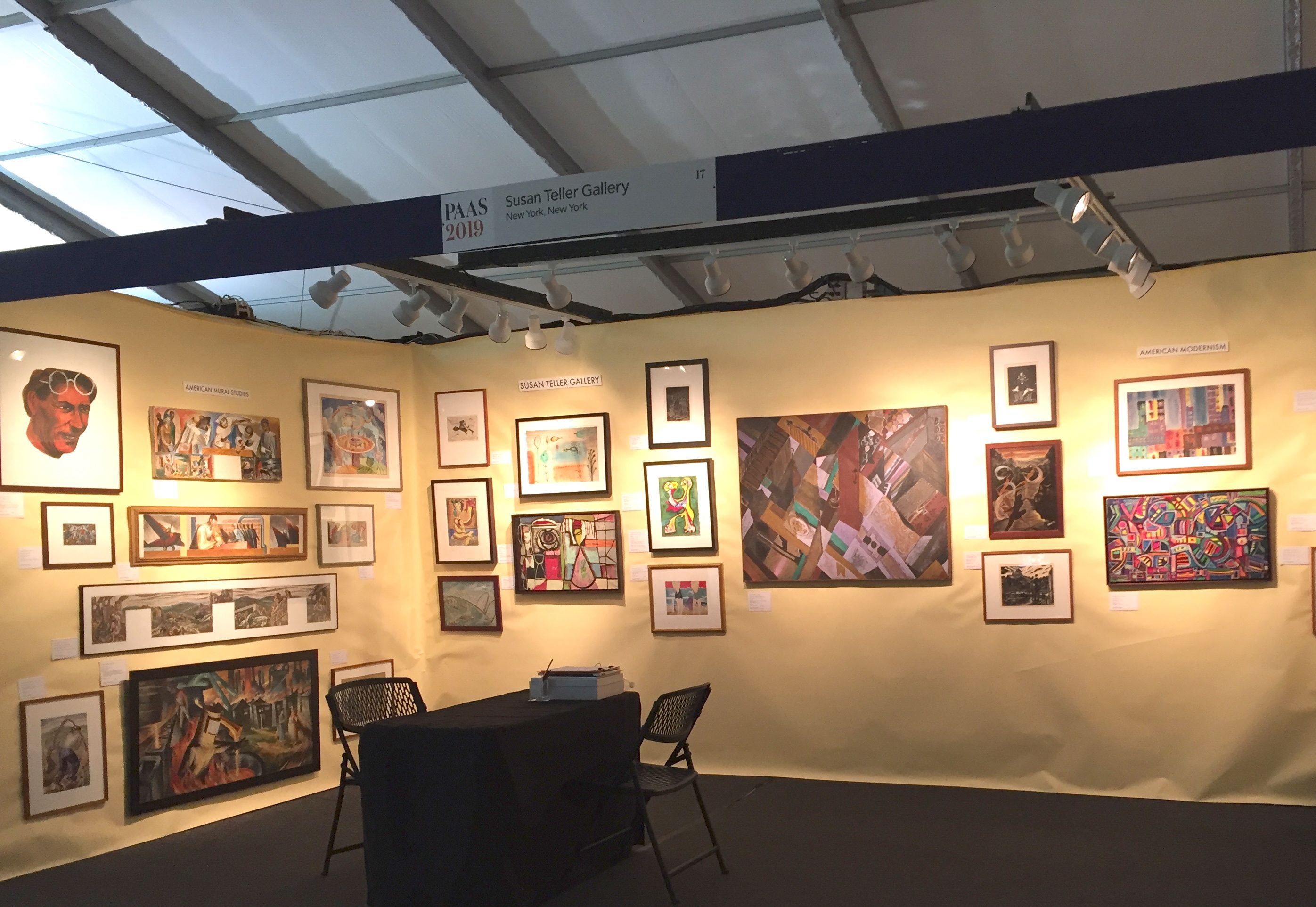
About the Seller
4.9
Platinum Seller
Premium sellers with a 4.7+ rating and 24-hour response times
Established in 1988
1stDibs seller since 2020
113 sales on 1stDibs
Typical response time: 1 hour
- ShippingRetrieving quote...Shipping from: New York, NY
- Return Policy
Authenticity Guarantee
In the unlikely event there’s an issue with an item’s authenticity, contact us within 1 year for a full refund. DetailsMoney-Back Guarantee
If your item is not as described, is damaged in transit, or does not arrive, contact us within 7 days for a full refund. Details24-Hour Cancellation
You have a 24-hour grace period in which to reconsider your purchase, with no questions asked.Vetted Professional Sellers
Our world-class sellers must adhere to strict standards for service and quality, maintaining the integrity of our listings.Price-Match Guarantee
If you find that a seller listed the same item for a lower price elsewhere, we’ll match it.Trusted Global Delivery
Our best-in-class carrier network provides specialized shipping options worldwide, including custom delivery.More From This Seller
View AllJoseph LeBoit, Derby Winner
Located in New York, NY
Joseph (Joe) Leboit made this extremely intense image of a supposedly happy recipient of a 'Derby Winner.' (Probably refers to the Irish Derby.) In fact the couple and seventeen chil...
Category
Mid-20th Century Ashcan School Figurative Prints
Materials
Lithograph
Convalescent
Located in New York, NY
Mathilde de Cordoba was born in New York City and spent her career there. She is known for her studies of women and children.
Convalescent is sign...
Category
1930s Ashcan School Interior Prints
Materials
Lithograph
Jane Rogers, Breakfast
Located in New York, NY
Jane Rogers was born in the artists' colony of Woodstock, New York. Most of her career was spent in New York. Although her dates are most often given as 18...
Category
Mid-20th Century Ashcan School Figurative Prints
Materials
Lithograph
Room for One More (New York City Subway)
By Irving Guyer
Located in New York, NY
This Depression-era New York City subway scene says it all. The body language of all five passengers tells us where each of them is in his or her ...
Category
1930s Ashcan School Figurative Prints
Materials
Aquatint, Etching
James Penney, Corridor
By James Penney
Located in New York, NY
James Penney was widely known for his New Yorker covers as well as his paintings and prints.
Penney was from Saint Joseph, Missouri. He trained in NY...
Category
1930s Ashcan School Interior Prints
Materials
Lithograph
$720 Sale Price
20% Off
James Penney, Point of Order
By James Penney
Located in New York, NY
James Penney was widely known for his New Yorker covers as well as his paintings and prints.
Penney was from Saint Joseph, Missouri. He trained in NYC at the Art Students League. The New-York Historical Society and the Library of Congress both have collections of his work.
Signed, titled, and dated.
Especially like the test marks at the lower right and the way the lawyer is leaning/relaxing on the judge...
Category
Mid-20th Century Ashcan School Interior Prints
Materials
Lithograph
You May Also Like
The Metro Station in Paris - Original Woodcut by S. Birga - 1994
Located in Roma, IT
The Metro Station in Paris is an original contemporary artwork realized by Sergio Birga (Florence, 1940) in 1994.
Original B/W xylograph on ivory paper. Pa...
Category
1990s Modern Interior Prints
Materials
Woodcut
Wine Makers - Original Woodcut by H. Bischoff - Early 20th Century
Located in Roma, IT
Vinattieri is a beautiful artwork realized by Henry Bischoff.
Xilograph. In good condition. A French text printed on the back.
Henry Bischoff (1882-1951) was a Swiss painter and en...
Category
Early 20th Century Figurative Prints
Materials
Woodcut
Here We Are Again by Thomas Nast 1878 Harpers Weekly centerfold
By Thomas Nast
Located in Paonia, CO
Here we go again is an original hand colored wood engraving from a January 1878 Harpers Weekly. Here we see Thomas Nast's ever enduring interpretation of Santa Clause modeled from Clement Moore's Visit from Saint Nicholas. Drawing inspiration from his native German Saint Nicholas, Nast helped the American people believe in a Santa Clause who kindness and generosity brought with it elves, reindeer pulling sleds, Santas workshop, using chimneys...
Category
1870s Figurative Prints
Materials
Woodcut
Early Morning
By Will Barnet
Located in Buffalo, NY
A nice rare woodcut by the noted American Artist Will Barnet. This woodcut is from 1939 and is titled and pencil signed on the base "Early Morning", Will...
Category
1930s American Modern Figurative Prints
Materials
Woodcut, Paper
Men in Room - Original Etching - Early 19th Century
Located in Roma, IT
Image dimensions: 20 x 15 cm.
Men in Room is an original etching on paper, realized by an Anonymous artist in the Early 19th Century, following the so-called "Historic Romanticism"....
Category
Early 19th Century Figurative Prints
Materials
Woodcut
'The Bath' — Meji Era Cross-Cultural Woman Artist
By Helen Hyde
Located in Myrtle Beach, SC
Helen Hyde, 'The Bath', color woodblock print, edition not stated, 1905, Mason & Mason 59. Signed in pencil in the image, lower right. Numbered '96' in pencil in the image, lower left. The artist's monogram in the block, lower left, and 'Copyright, 1905, by Helen Hyde.' upper right. A superb impression with fresh colors on tissue-thin cream Japanese paper; the full sheet with margins (7/16 to 1 5/8 inches), in excellent condition. Matted to museum standards, unframed.
Image size 16 1⁄4 x 10 1⁄8 in. (413 x 260 mm); sheet size: 19 1⁄4 x 11 1⁄8 in. (489 x 283 mm).
Impressions of this work are held in the following collections: Achenbach Foundation for Graphic Arts, Art Institute of Chicago, Fine Arts Museums of San Francisco (De Young), Harvard Art Museums, Library of Congress, Metropolitan Museum of Art, New York Public Library, Smithsonian American Art Museum, Terra Foundation for American Art, University of Oregon Museum of Art.
ABOUT THE ARTIST
Helen Hyde (1868-1919) was a pioneer American artist best known for advancing Japanese woodblock printmaking in the United States and for bridging Western and Japanese artistic traditions. Hyde was born in Lima, New York, but after her father died in 1872, her family relocated to Oakland, California, where she spent much of her youth.
Hyde pursued formal art education in the United States and Europe. She enrolled in the San Francisco School of Design, where she took classes from the Impressionist painter Emil Carlsen; two years later, she transferred to the Art Students League in New York, studying there with Kenyon Cox. Eager to expand her artistic repertoire, Hyde traveled to Europe, studying under Franz Skarbina in Berlin and Raphael Collin in Paris. While in Paris, she first encountered Japanese ukiyo-e prints, sparking a lifelong fascination with Japanese aesthetics. After ten years of study, Hyde returned to San Francisco, where she continued to paint and began to exhibit her work.
Hyde learned to etch from her friend Josephine Hyde in about 1885. Her first plates, which she etched herself but had professionally printed, represented children. On sketching expeditions, she sought out quaint subjects for her etchings and watercolors. In 1897, Hyde made her first color etchings—inked á la poupée (applying different ink colors to a single printing plate)—which became the basis for her early reputation. She also enjoyed success as a book illustrator, and her images sometimes depicted the children of Chinatown.
After her mother died in 1899, Hyde sailed to Japan, accompanied by her friend Josephine, where she would reside, with only brief interruptions, until 1914. For over three years, she studied classical Japanese ink painting with the ninth and last master of the great Kano school of painters, Kano Tomonobu. She also studied with Emil Orlik, an Austrian artist working in Tokyo. Orlik sought to renew the old ukiyo-e tradition in what became the shin hanga “new woodcut prints” art movement. She immersed herself in the study of traditional Japanese printmaking techniques, apprenticing with master printer Kanō Tomonobu. Hyde adopted Japanese tools, materials, and techniques, choosing to employ the traditional Japanese system of using craftsmen to cut the multiple blocks and execute the exacting color printing of the images she created. Her lyrical works often depicted scenes of family domesticity, particularly focusing on women and children, rendered in delicate lines and muted colors.
Through her distinctive fusion of East and West, Hyde’s contributions to Western printmaking were groundbreaking. At a time when few Western women ventured to Japan, she mastered its artistic traditions and emerged as a significant figure in the international art scene.
Suffering from poor health, she returned to the United States in 1914, moving to Chicago. Having found restored health and new inspiration during an extended trip to Mexico in 1911, Hyde continued to seek out warmer climates and new subject matter. During the winter of 1916, Hyde was a houseguest at Chicora Wood, the Georgetown, South Carolina, plantation illustrated by Alice Ravenel Huger Smith in Elizabeth Allston Pringle’s 1914 book A Woman Rice Planter. The Lowcountry was a revelation for Hyde. She temporarily put aside her woodcuts and began creating sketches and intaglio etchings of Southern genre scenes and African Americans at work. During her stay, Hyde encouraged Smith’s burgeoning interest in Japanese printmaking and later helped facilitate an exhibition of Smith’s prints at the Art Institute of Chicago.
During World War I, Hyde designed posters for the Red Cross and produced color prints extolling the virtues of home-front diligence.
In ill health, Hyde traveled to be near her sister in Pasadena a few weeks before her death on May 13, 1919. She was buried in the family plot near Oakland, California.
Throughout her career, Hyde enjoyed substantial support from galleries and collectors in the States and in London. She exhibited works at the St. Louis Exposition in 1897, the Pan-American Exhibition in Buffalo in 1901, the Tokyo Exhibition for Native Art (where she won first prize for an ink drawing) in 1901, the Alaska-Yukon-Pacific Exhibition in Seattle in 1909 (received a gold medal for a print), the Newark Museum in 1913, a solo show at the Chicago Art Institute in 1916, and a memorial exhibition in 1920, Detroit Institute of Arts, Color Woodcut Exhibition in 1919, New York Public Library, American Woodblock Prints...
Category
Early 1900s Showa Figurative Prints
Materials
Woodcut
